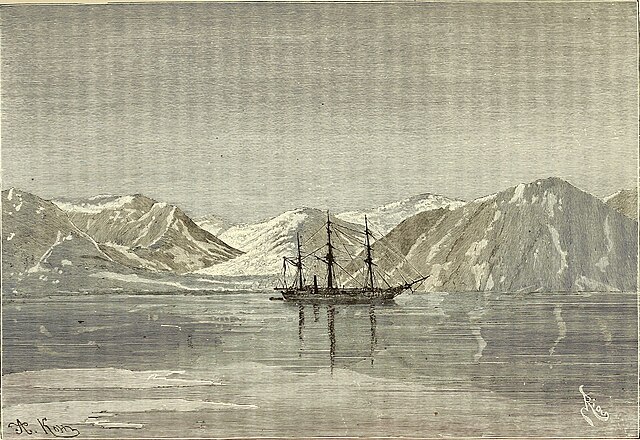The Vega Expedition of 1878–1880, named after the SS Vega and under the leadership of Swedish Finnish explorer Adolf Erik Nordenskiöld, was the first Arctic expedition to navigate through the Northeast Passage, the sea route between Europe and Asia through the Arctic Ocean, and the first voyage to circumnavigate Eurasia. Initially a troubled enterprise, the successful expedition is considered to be among the highest achievements in the history of Swedish science.
Return of Swedish Finnish explorer Adolf Erik Nordenskiöld with the SS Vega to Stockholm on 24 April 1880.
Swedish steamship SS Vega, used during the expedition of the Finnish-Swedish explorer Adolf Erik Nordenskiöld.
SS Vega at anchor in the Penkigney Bay of the Bering Sea.
SS Vega frozen into packed ice outside Piltekai, Siberia. Photo by Louis Palander
SS Vega was a Swedish barque, built in Bremerhaven, Germany in 1872. The Vega was the first ship to complete a voyage through the Northeast Passage, and the first vessel to circumnavigate the Eurasian continent, during the Vega expedition. Initially a troubled enterprise, the successful expedition is considered to be among the highest achievements in the history of Swedish science.
The Vega, painting by Jacob Hägg
Vega monument in Stockholm
Return of Adolf Erik Nordenskiöld with the Vega to Stockholm on April 24, 1880
Bath in Kusatsu i by Vega expedition member Olof Sörling [sv] during S/S Vega's stay in Japan September–November 1879






![Bath in Kusatsu i by Vega expedition member Olof Sörling [sv] during S/S Vega's stay in Japan September–November 1879](https://upload.wikimedia.org/wikipedia/commons/thumb/7/7a/Bath_in_kusatsu.jpg/640px-Bath_in_kusatsu.jpg)